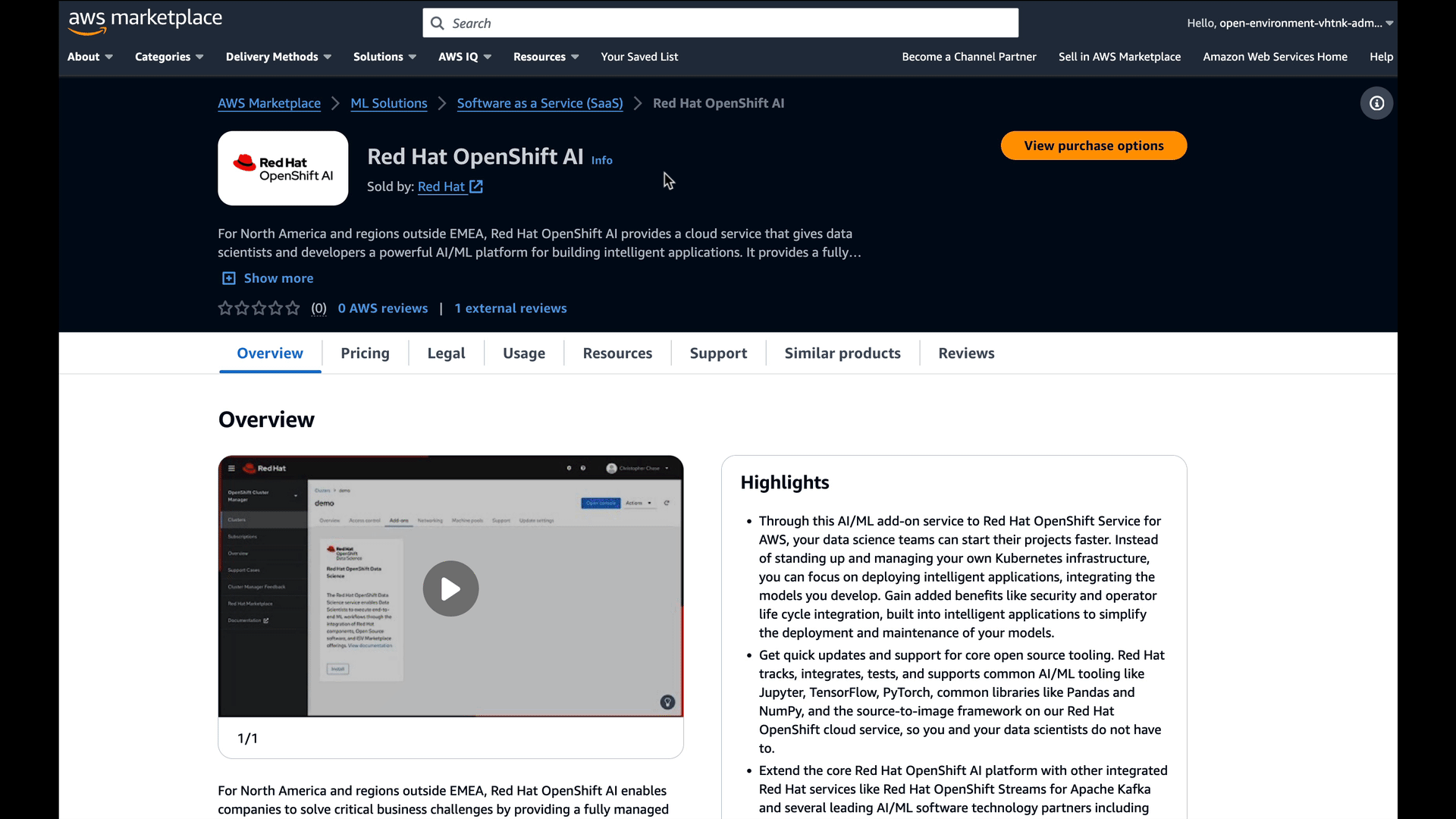Red Hat OpenShift on AWS
AWS MarketPlace Product Overview - Red Hat OpenShift AI
Red Hat OpenShift AI enables companies to solve critical business challenges by providing a fully managed cloud service environment based-on the Red Hat OpenShift Service on AWS. Red Hat OpenShift AI allows organizations to quickly build and deploy artificial intelligence (AI)/ML models by integrating open-source applications with commercial partner technology.

Red Hat OpenShift AI is an easy-to-configure cloud service that provides a powerful platform for building AI/ML models and applications. It combines the self-service data scientists and developers want with the confidence enterprise IT demands into one common platform. Common tooling, such as Jupyter notebooks and associated TensorFlow and Pytorch frameworks, are an add-on to Red Hat OpenShift Service on AWS, an application platform cloud service powered by Kubernetes and co-managed by Red Hat and Amazon.
AWS MarketPlace - ease of ordering on the fly
Environments Rosa on AWS and then use that environment to deploy an AI solution that was located near end users in a certain region and evaluate the trade-offs of managing these Services in-house versus using a Marketplace style deployment let’s say they needed to develop a POC a proof of concept that validated the solution worked and solved a specific problem before putting the problem in place so basically building a beta or Alpha environment that would then be used to validate could be spun down and different environments could be spun up as multiple Solutions
in addition to this scenario of deploying that the customer could also be evaluating the performance against hosting it and something like sagemaker versus hosting it and a managed environment which technically sagemaker would be similar to but what are the comparisons and difference and features that are truly given to the user and how does the learner evaluate the difference between the two so could we link directly to the documentation pages and let them do their own research but facilitate the research
Beyond instantiating the cluster determining the size of the worker pools based on the AI model being deployed memory or with a GPU and then focus on you know establishing monitoring and logging and performance and all the other pieces that go along with it all as small separate components since this is specific to AWS we could use cloudwatch in some of the other monitoring tools specific to the provider versus trying to set up Prometheus which may align better with for some customers and not so much with others and so there could be multiple again Solutions with how the monitoring logging was provided but basically you know during this POC test out all the components that will be used in a production environment or needed in a production environment for full life cycle management